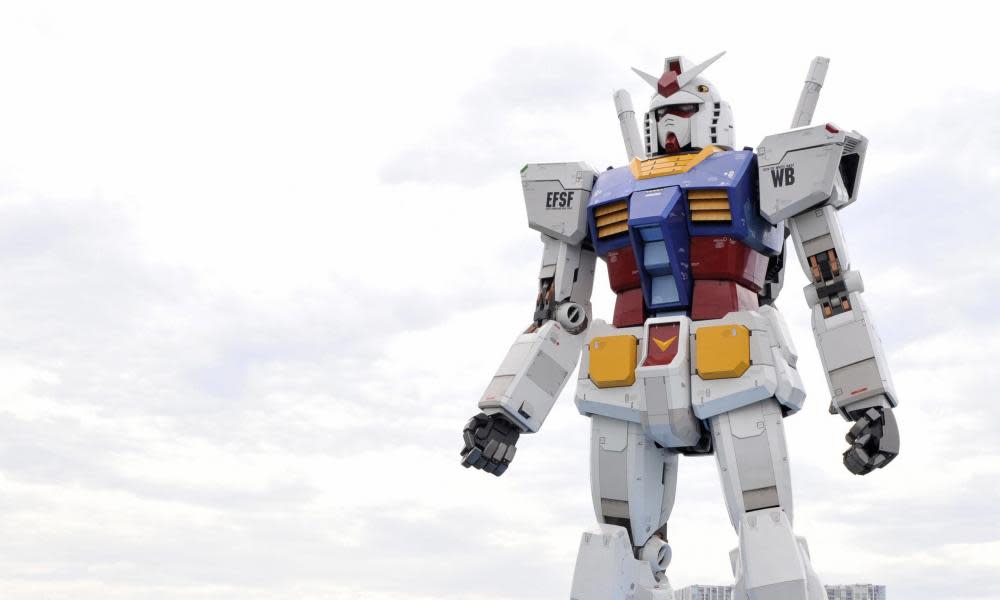Big in Japan: giant Gundam robot makes its first moves in Yokohama

It stands just over 18 metres tall and weighs 25 tonnes. And, after years of painstaking work, a life-size Japanese Gundam robot has just proved to its legions of fans that it really can move.
Modelled on one of the robots from the hugely popular 1970s anime series Mobile Suit Gundam, the huge machine was put through its paces this week at its new home in the the port city of Yokohama.
Life-sized Gundam in Yokohama is now in testing mode.pic.twitter.com/51HVoraPb7
— Catsuka (@catsuka) September 21, 2020
The humanoid was due to become the centrepiece of Gundam Factory Yokohama, south of Tokyo, on 1 October, but the virus pandemic means it will not be officially unveiled until later in the year, according to the site’s operator.
“This decision was made to ensure the health and safety of our fans and employees in response to the worldwide spread of Covid-19,” it said in a statement.
“We apologise to all of our fans who were looking forward to our grand opening and ask for your understanding. In the meantime, we will be making preparations so that all of our visitors can enjoy themselves in safety.”
Fans of the multibillion-dollar Gundam franchise, which has expanded to include films, manga, plastic models and video games, were given a sneak preview this week when a speeded-up video showed the towering creation taking a knee and moving its right arm and fingers, watched by workers on a nearby observation deck.
Related: Loo with a view: transparent public toilets installed in Tokyo parks
Engineers reportedly started designing the robot six years ago to ensure each piece met weight restrictions to prevent its limbs from buckling and that all 24 moveable parts worked seamlessly.
Despite Gundam’s military sci-fi background, the robot’s transformation from a collection of parts to fully functioning humanoid brushed with tradition when Shinto priests purified its soon-to-be-installed head in an adaptation of a jotoshiki, a roof-laying ceremony usually performed to mark the near-completion of a new building.

 Yahoo News
Yahoo News 
